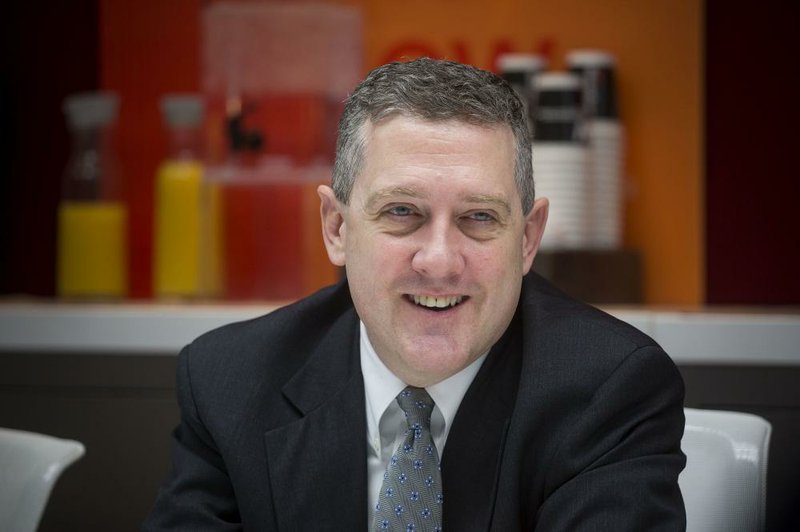Federal Reserve Bank of St. Louis President James Bullard said only one U.S. interest rate hike is necessary in the next couple of years -- a prediction backed by an economic environment marked by low productivity and the popularity of safe assets.
"Low interest rates are likely to continue to be the norm for the next two or three years," he said.
Bullard spoke Monday to a group of economists at the annual Association for University Business and Economic Research conference at the University of Arkansas at Fayetteville. He said his estimate for rates is "much flatter" than the rest of the Fed.
Bullard predicted that the increase will come at the Federal Open Market Committee meeting in December.
All 17 Fed leaders forecast that the rate will increase gradually through the end of 2019, with a median prediction of 2.6 percent. Individually, Bullard anticipates the rate rising to about 0.68 percent and staying there through 2019.
The rate in question is the federal funds rate, or the rate at which banks loan one another money overnight to meet reserve requirements. Changing the rate is one tool the Fed uses to influence the economy. The benchmark rate affects short-term rates, including credit card rates. But the real influence of the federal fund rate is on long-term borrowing costs, including the rate on mortgages and corporate debt. Those interest rates affect the prices of stocks, bonds, real estate and other assets.
"He was very clear that he had a different projection from the median," said Kathy Deck, University of Arkansas director for business and economic research at the Sam M. Walton College of Business. "When we get information from the Fed, we don't know whose projection belongs to whom."
Bullard credits low economic productivity and the search for safe assets for the pressure to keep interest rates low. Goods and services produced by American workers -- nonfarm productivity -- decreased at a 0.6 percent annual rate during the second quarter of 2016, the Bureau of Labor Statistics reported in September. It's the third quarter in row that worker productivity has slid, the longest decline since 1979.
Since the 2008 recession when the Fed set interest rates near zero, investors have become increasingly willing to pay high prices for safe assets, including government debt.
"Real safe rates of return are exceptionally low at present and not expected to rise soon," he said. "This means, in turn, that the policy rate should be expected to remain exceptionally low over the forecast horizon.
Last month Bullard voted against raising rates from the current target range of 0.25 percent to 0.50 percent.
The Fed last increased rates in December 2015. The December hike was the first in nine years.
The Federal Reserve Open Market Committee meets eight times a year, about every six weeks.
Most Reserve Bank presidents -- except the president of Federal Reserve Bank of New York, who has a vote every year -- serve one-year voting terms on a rotating basis. Bullard, whose district includes all of Arkansas and parts of Illinois, Indiana, Kentucky, Mississippi, Missouri and Tennessee, is a voting member of the committee in 2016.
Business on 10/25/2016
